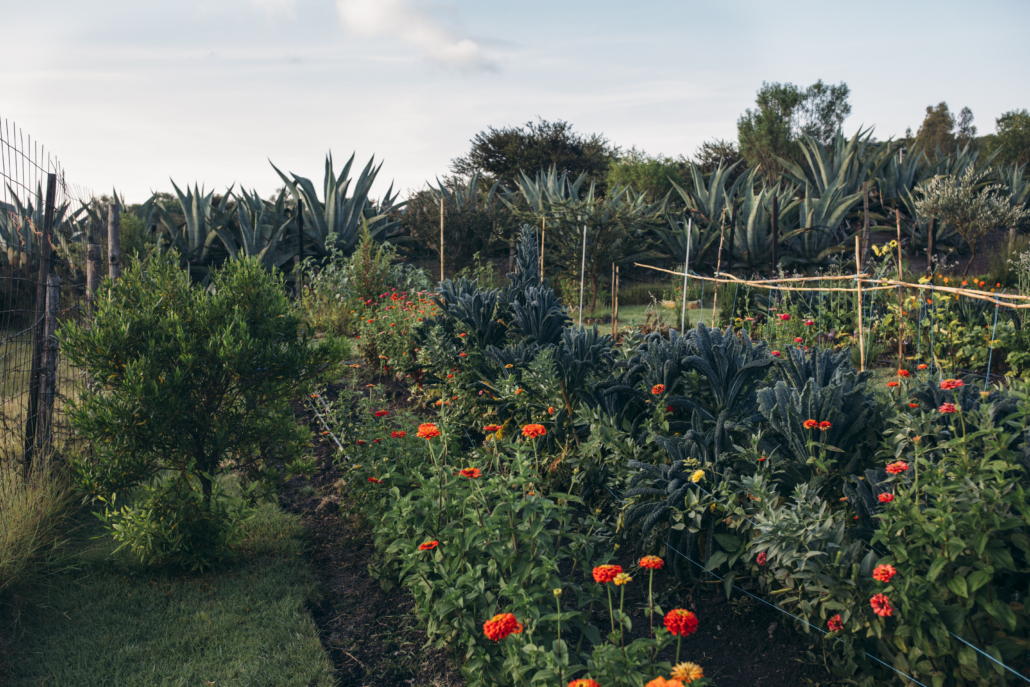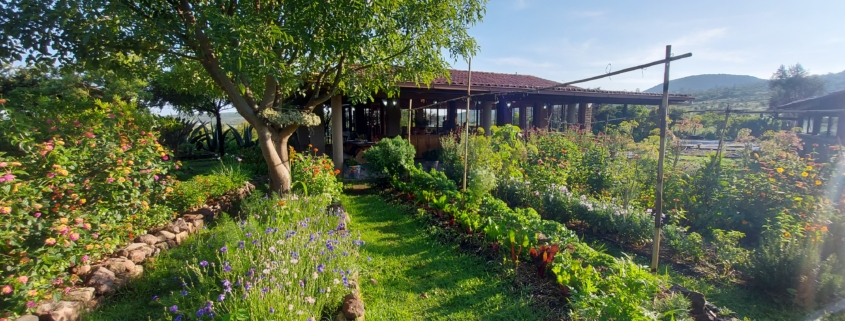Organic Certification as the Basis of Regenerative Agriculture?
There are discussions that organic certification should be mandated as the starting point of regenerative agriculture.
Our definition of Regenerative Agriculture:
Regenerative systems improve the environment, soil, plants, animal welfare, health, and communities.
The opposite of Regenerative is Degenerative
This is an essential distinction in determining practices that are not regenerative.
Regeneration International has consistently asserted that the four principles of organic agriculture are essential in determining whether practices are regenerative or degenerative.
Health
Organic agriculture should sustain and enhance the health of soil, plant, animal, human and planet as one and indivisible.
Ecology
Organic agriculture should be based on living ecological systems and cycles, work with them, emulate them and help sustain them.
Fairness
Organic agriculture should build on relationships that ensure fairness with regard to the common environment and life opportunities.
Care
Organic agriculture should be managed in a precautionary and responsible manner to protect the health and well-being of current and future generations and the environment.

Agricultural systems that use degenerative practices and inputs that damage the environment, soil, health, genes, and communities and involve animal cruelty are not regenerative.
Synthetic toxic pesticides, synthetic water-soluble fertilizers, genetically modified organisms, confined animal feeding operations, exploitive marketing and wage systems, destructive tillage systems, and clearing high-value ecosystems are examples of degenerative practices.
Such systems must be called degenerative agriculture to stop greenwashing and hijacking.
While we strongly support the principles of organic agriculture, Regeneration International cannot support mandating the current organic certification systems, such as the USDA and EU regulations, as the basis of regenerative agriculture. These systems need long-overdue reforms that are preventing the majority of farmers from taking up certification.
I am part of the generation of organic farmers who developed the first organic standards and certification systems in the 1970s and 80s to ensure the integrity of organic agriculture and stop false claims when people were selling their produce as organic. We did this to protect both farmers and consumers.
Our first standards were simple one—or two-page documents. Organic farmers developed them with extensive experience and knowledge of organic farming systems.
The first certification organizations were formed out of this. They were democratic, not-for-profit membership organizations. Our inspectors were other pioneering organic farmers whom we trusted for their knowledge and integrity. We would have an inspection once every two years and submit a signed declaration for the non-inspection years. We used to look forward to our inspectors, as it was time we could learn from them ways to improve our farms and organic production systems.
The worst thing that happened to the organic sector was when governments started regulating it. At the time, we believed that government regulation would protect the sector and stop fraudulent claims and substitutions, so we strongly advocated for it.
Our clear and compelling one and two-page standards became lengthy bureaucratic documents of complex requirements and restrictions. Our inspectors, initially respected fellow farmers, were replaced with auditors prohibited from giving advice.
The certifiers became inflexible bureaucracies that charged high prices for their services. The auditing process assumed that farmers were guilty until they could prove their innocence. The auditors spent less time inspecting the farm and more time inspecting the paperwork.
Initially, certification helped grow the organic sector as it built consumer confidence in the credibility of organic labels. As time passed and more countries enacted their national organic regulations, they became more variable and complex. Inconsistencies began to emerge, with some countries allowing antibiotic use, synthetic feed supplements, and toxic synthetic preservatives. These differences started to cause trade barriers, forcing producers who wanted to export to conform to each country’s regulatory systems and pay the extra costs of multiple certifications. It meant that only the largest operators with economies of scale could export their products as organic. This facilitated the rise of industrial organics.
Many countries were forced to change their national systems to conform to significant markets like Europe and the USA. I remember when Australia enacted an organic export law that complied with the European organic regulation so that a few grain growers could access that market. The rest of us were forced to pay extra for annual audits and comply with complex standards. The cost of certification in terms of time and money increased dramatically, even though most of us didn’t export.
Despite this, Australia had no agreement to export our primary organic produce, meat, because we didn’t have mandatory ‘housing’ for our livestock. We let our animals free range on pasture, eat grass and natural herbage, and allow them to express their natural behaviors. I was shocked when I first visited certified European organic dairy farms and realized the animals—cows, sheep, and buffalos—were confined in barns, stepping in their urine and manure, and fed unnatural grains for long periods. Organic CAFO systems.
The agribusiness cartels continued to hijack organic production systems and ignored the intentions of the standards. The USA had organic agribusiness CAFOs where the animals were confined and never allowed out into pasture. These factory farms deliberately disregarded the standard that mandated animals’ access to pasture. Some agribusiness operations were sued over this; however, they won in court when their high-priced lawyers successfully argued that having a window in the confined factory allowed animals access to pasture. Years were spent developing a new animal husbandry rule that required animals to spend time on pastures. The agribusiness cartels successfully lobbied members of Congress to prevent the new rule from becoming law, allowing massive cruel factory farms to sell their meat, milk, and eggs as organic. The law finally passed. However, there seems to be limited enforcement for them to comply.
The term ‘organic farming’ comes from J.I. Rodale, who popularized the name in the 1940s, He stated that the recycling of organic matter in soil was the basis of the system. Organic farming systems are soil-based systems. This was originally the first part of every organic standard. Initially, the most essential tool an inspector used was a shovel to inspect soil health. When certifiers employed auditors, the most critical tools were a laptop computer and a paper trail audit. Inspecting the soil was utterly neglected.
The ultimate betrayal of our original intentions in certifying organic was the agribusiness industry’s hijacking to get the USDA to approve soil-less organic systems—organic hydroponics. Due to the need for countries to conform to the largest markets, other countries are now approving hydroponics as organic. This has bitterly divided the organic sector. Many people feel that organic regulations and their certification systems have lost credibility.
What we started as pioneer organic family farmers 50 years ago has been hijacked by government bureaucrats and agribusiness cartels. The trend is that in many parts of the world, the smaller family-owned organic farms have left the certified organic industry, although they still farm organically. The extra costs in money and overly bureaucratic, time-consuming compliance requirements mean that organic certification is not worth it. Consequently, the smaller family farms are being replaced by agribusiness. The trend shows the number of acres is increasing in a faster proportion than the number of farms. This is because large agribusiness corporations are replacing smaller family farms. Organic certification is increasingly becoming dominated by agribusiness.
My own experience is that I decided to stop being certified when I was President of IFOAM – Organics International, the worldwide umbrella body. After decades of paying fees, I had received no benefits, only costs. I was not the only one in my region. Around the turn of the century (2000), our district had ten certified farmers. I was the 2nd last to give it up. By 2014, no certified farmers were left, although those of us who were still farming called ourselves organic farmers.
The only countries with significant increases in organic family farms are those that allow group certification. This is because it is cost-effective and fair. The bulk of new organic farmers come from India, Mexico, and Uganda, and they are group-certified.
Many countries permit participatory guarantee systems (PGS) to ensure fairness for small producers. PGS systems are based on farmers peer reviewing each other to ensure the integrity of organic claims rather than being certified by a third-party organization. Most professional groups, such as doctors, lawyers, and scientists, use peer review to ensure the integrity of claims. Farmers should not be an exception. PGS has the advantage of being affordable for smaller farmers, especially in the global south, where third-party certification usually costs more than their annual income.
The world’s largest organic markets, the EU and the US prohibit PGS and make it illegal for these producers to call their products, such as coffee, tea, vanilla, and cocoa, organic. At the same time, large industrial-scale corporate organic farms can access these markets because they have the economies of scale to afford third-party certification. This is grossly unfair to some of the poorest farmers on the planet.
The exodus of family farms from organic certification, combined with the reluctance of many farmers to be certified organic, has meant they must find another way to label their produce. Many farmers now market their produce using terms like regenerative and agroecological.
Certification systems must be reformed if the organic sector wants to engage these family farmers and avoid being dominated by industrial organic corporations. They need to be simpler, cheaper, and fairer. Group certification systems, especially PGS, are some of the best options to do this.
We must take back standards and certification from governments and agribusiness and have control over them. We must build a new, more significant movement that combines like-minded systems such as Agroecology, Organic Agriculture, and Regenerative Agriculture as the natural alternative to degenerative industrial agriculture.
Regeneration International believes that all agricultural systems should be regenerative, organic, and based on the science of agroecology. We are developing AROES (Agroecological Regenerative Organic Ecosystem Services) as a project that uses organic certification to our AROES standard, which is fit for purpose. Ronnie Cummins and I put a lot of time into this concept.
A significant difference is that we will be paying farmers to be certified. I have spent a lot of time road-testing AROES by giving presentations about this to numerous farmers on every continent. Most stated they would not pay for organic certification. However, when I asked them if we paid them for ecosystem services, they said they were prepared to be certified.
Our AROES standard and certification system will be genuinely regenerative, regenerating the climate, agroecosystems, and communities. In future articles, we will expand on this and explain how it works.

